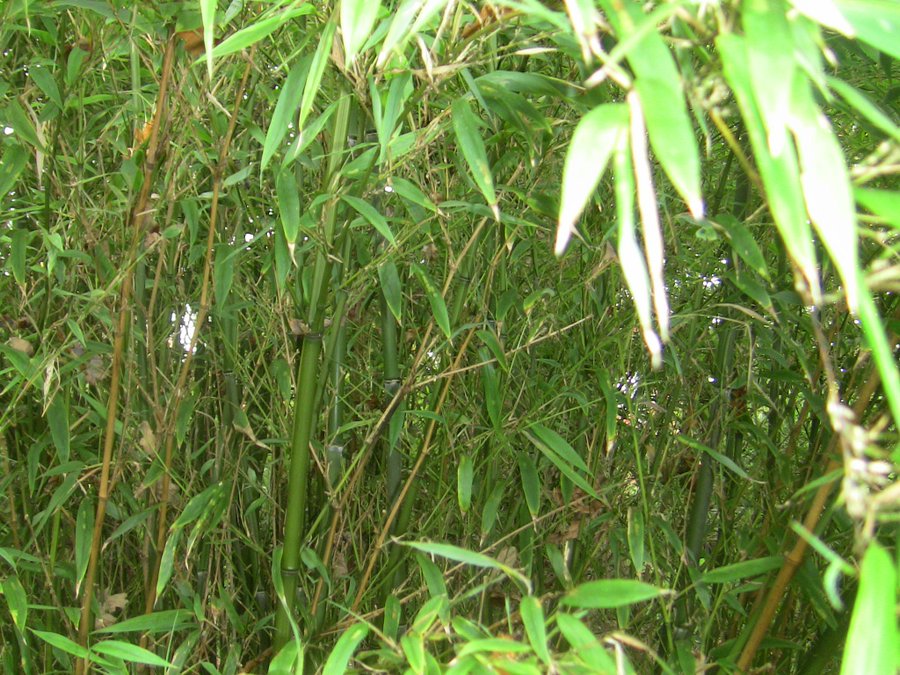Phyllostachys nigra 'Megurochiku' bamboo has olive-green stems with a black stripe through the sulcus.
The new stems appear green, however, the stripes are predominant in the sun as the stems get older.
You'll have to look carefully to differentiate 'Megurochiku' from ‘Boryana’. 'Megurochiku' has brown stripes and ‘Boryana’ has black stripes and spots.
As mentioned earlier, there are over 10 cultivars or varieties of the black bamboo plant, Phyllostachys nigra.
Many growers in the UK love the Phyllostachys nigra Black Bamboo and therefore is becoming very popular among bamboo growers.
Check out the black bamboo plants for sale at Crocus.co.uk
Common black bamboo plants in the UK
There are 4 common black bamboo plants that grow in UK gardens. You can find most of them at the Kew's Japanese Bamboo Garden in London.
The common Back Bamboo Nigra can also be seen in many home gardens. It is easy to identify with its black stems.
4 common black bamboo plants:
- Black Bamboo Nigra (Phyllostachys nigra)
- Phyllostachys nigra f. henonis
- Phyllostachys nigra 'Megurochiku'
- Tiger Bamboo or simply ‘Bory’ (Phyllostachys nigra ‘Boryana’)
What types of care to provide for black bamboo plants?
If you are planning to build a roots barrier or thin out your running bamboo rhizomes and culms, do it in early Spring.
Always add the access soil and mulch to the base of the bamboo plants and tidy up before Summer. This will stimulate the plants to grow within weeks.
The best mulch for the bamboo is bamboo leaves. Rake the leaves and put them back near or around the bamboo.
The other Phyllostachys bamboo plants have green stems with peculiar spots and stripes colourations.
These running bamboos are hardy, tall and upright plants, and also invasive.
They require care and attention to grow well.
All in all, the black bamboo plant is one of the Phyllostachys nigra bamboos, well-known for its spectacular black stems.


No comments:
Post a Comment
Thank you for the comment.